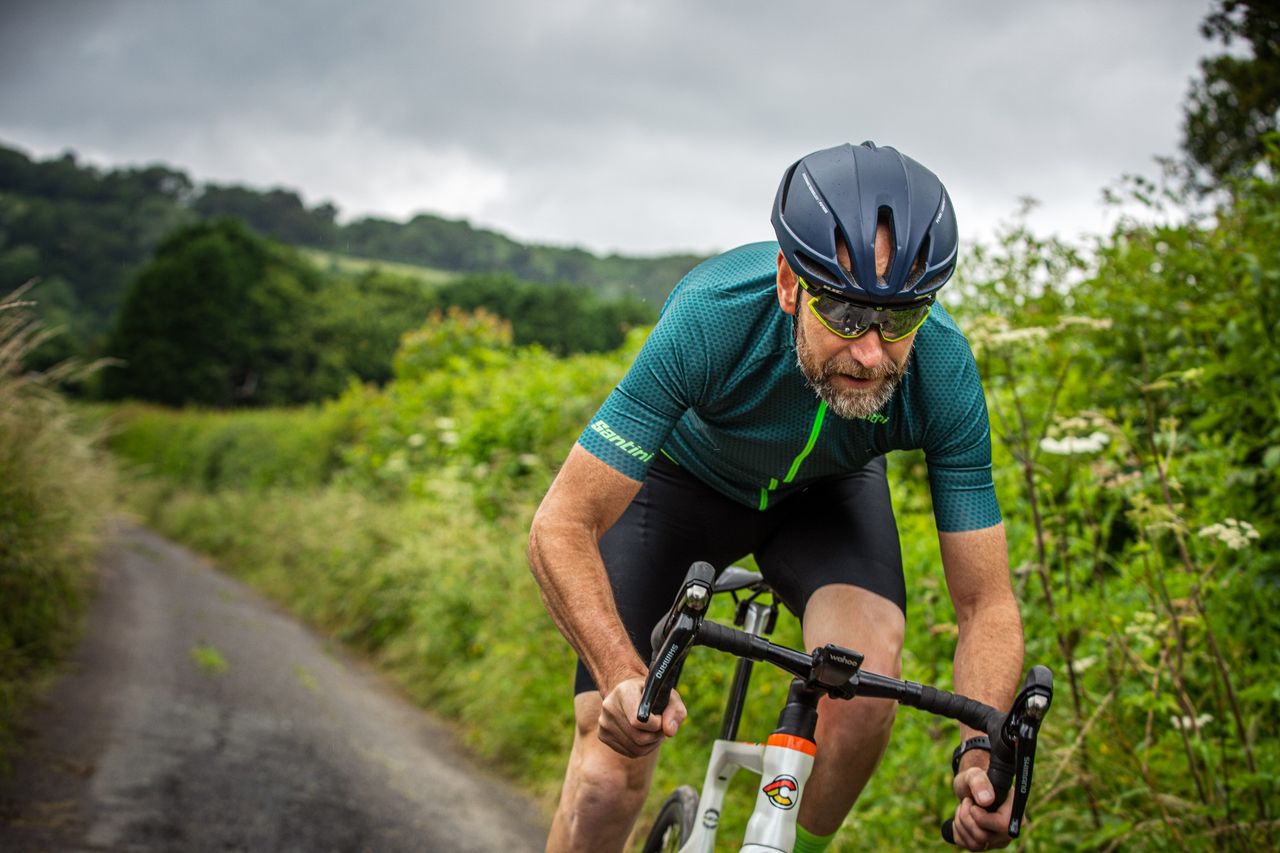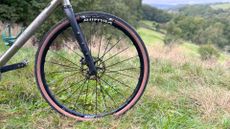Do some riders age faster than others, and, should I cut down my training as I get older?
Cycling coach Jon Sharples gives the lowdown on how to stay at the top of your cycling game as the years go by

As cyclists age, our training routines need to be adjusted to accommodate the inevitable physiological changes that come with getting older. While genetics play a significant role in determining how quickly or slowly we age, there are strategies all cyclists can use to stay competitive for longer.

Jon Sharples is owner and head of performance at TrainSharp, based near Lewes in Sussex: trainsharp.co.uk
The biological clock
We all have a unique ‘biological clock’ that affects how fast we age – some tick faster than others. Although genetics influence much of this process, we can still make smart training decisions to adapt. Ageing impacts key aspects of athletic performance, including aerobic capacity (VO2 max), muscle mass, strength, flexibility and recovery. Some may begin to experience physiological changes as early as in their 30s, while others maintain high levels of fitness well into their 50s and beyond. As a result, individualised training adjustments become essential.
For example, Cyclist 1 (slower ageing) may be able to maintain high-intensity training with fewer rest days, but may still benefit from longer recovery periods. Meanwhile, Cyclist 2 (faster ageing) may need to shift toward longer rides, reduce intensity and focus on recovery and strength work.
Reduce the volume
Fast facts
Be aware that your biological clock may be ticking faster or slower than those of your peers.
Reducing training volume or intensity can lower the risk of injury so you can enjoy cycling for longer.
Training smarter will almost certainly enhance your performance.
Be sure to strength train, focusing on all the major muscle groups.
Embrace Zone 2 rides, supplemented with short high-intensity efforts.
Listen to your body!
As cyclists age we become more prone to overuse injuries such as tendinitis, stress fractures, and joint issues. By reducing training volume, we decrease the likelihood of this type of setback. Less volume also means improved recovery. With age, the body requires more time to recover between intense sessions.
Having more time to adapt enhances the payoff from each workout. Add these gains together and the result is greater longevity in the sport. By finding the right balance, cyclists can keep riding, stay competitive and avoid burnout.
Train smarter
For many competitive cyclists, reducing training can be hard as they may feel like they’re losing their edge. Also, if training volume is significantly reduced without corresponding adjustments in diet or a focus on strength maintenance, cyclists may experience weight gain.
Remember this: it’s not about training less, but training smarter. Adjusting the volume, focusing on recovery, and incorporating strength and flexibility work are key to maintaining performance as we age.
Get The Leadout Newsletter
The latest race content, interviews, features, reviews and expert buying guides, direct to your inbox!
As you age - do more...
- Aerobic (Zone 2) rides: These lower-intensity, longer-duration rides help maintain aerobic fitness, are less taxing on the body and require shorter recovery periods, making them ideal for building endurance while minimising injury risks.
- Short, high-Intensity intervals: High-intensity sessions are still crucial for preserving VO2 max, maintaining fast-twitch muscle, and improving efficiency. Keep them brief, well-spaced, and ensure adequate recovery.
- Active recovery sessions: Adding more active recovery rides – easy-paced sessions that promote blood flow and muscle repair – helps to flush out metabolic waste, reduce muscle soreness, and accelerate recovery from harder efforts.
- Strength training and mobility work: Muscle mass and flexibility decline with age, so strength training and mobility exercises are critical. These workouts help preserve muscle, maintain balance, and prevent injuries.
As you age - do less...
- Back-to-back intense sessions: Recovery becomes more challenging with age, so it’s essential to alternate hard and easy days (or even weeks) to ensure proper recovery between demanding workouts.
- Threshold and VO2 max training: Threshold or VO2 max workouts are taxing on the cardiovascular and muscular systems. Reduce their frequency and volume to prevent overtraining and enable full recovery.
- Long, hard endurance rides: Multi-hour rides at a high pace, such as century rides, become increasingly difficult to recover from with age. Reducing the frequency of these long, intense sessions is advisable.
- High-volume training: Overall training volume should be reduced. You don’t need to cut out challenging rides entirely, but finding the right balance of intensity and recovery is key for sustaining performance and avoiding overuse injuries.
This feature originally appeared in Cycling Weekly magazine. Subscribe now and never miss an issue.

Thank you for reading 20 articles this month* Join now for unlimited access
Enjoy your first month for just £1 / $1 / €1
*Read 5 free articles per month without a subscription

Join now for unlimited access
Try first month for just £1 / $1 / €1
Steve has been writing (mainly fitness features) for Cycling Weekly for 11 years. His current riding inclination is to go long on gravel bikes... which melds nicely with a love of carbs
-
 I'll never rate a performance '10', it's important to my delusions of greatness that I can always believe I could have tried harder
I'll never rate a performance '10', it's important to my delusions of greatness that I can always believe I could have tried harderProtecting your ego is as easy as pretending you didn’t try, writes CW's columnist 'The Doc'
By Michael Hutchinson Published
-
 Mavic Allroad SL wheelset review: in an increasingly carbon world, can high-end alloy still cut it?
Mavic Allroad SL wheelset review: in an increasingly carbon world, can high-end alloy still cut it?Mavic has always done things differently, but how does the feature-packed, jack-of-all-trades Allroad SL compare to similarly priced carbon options?
By Neal Hunt Published